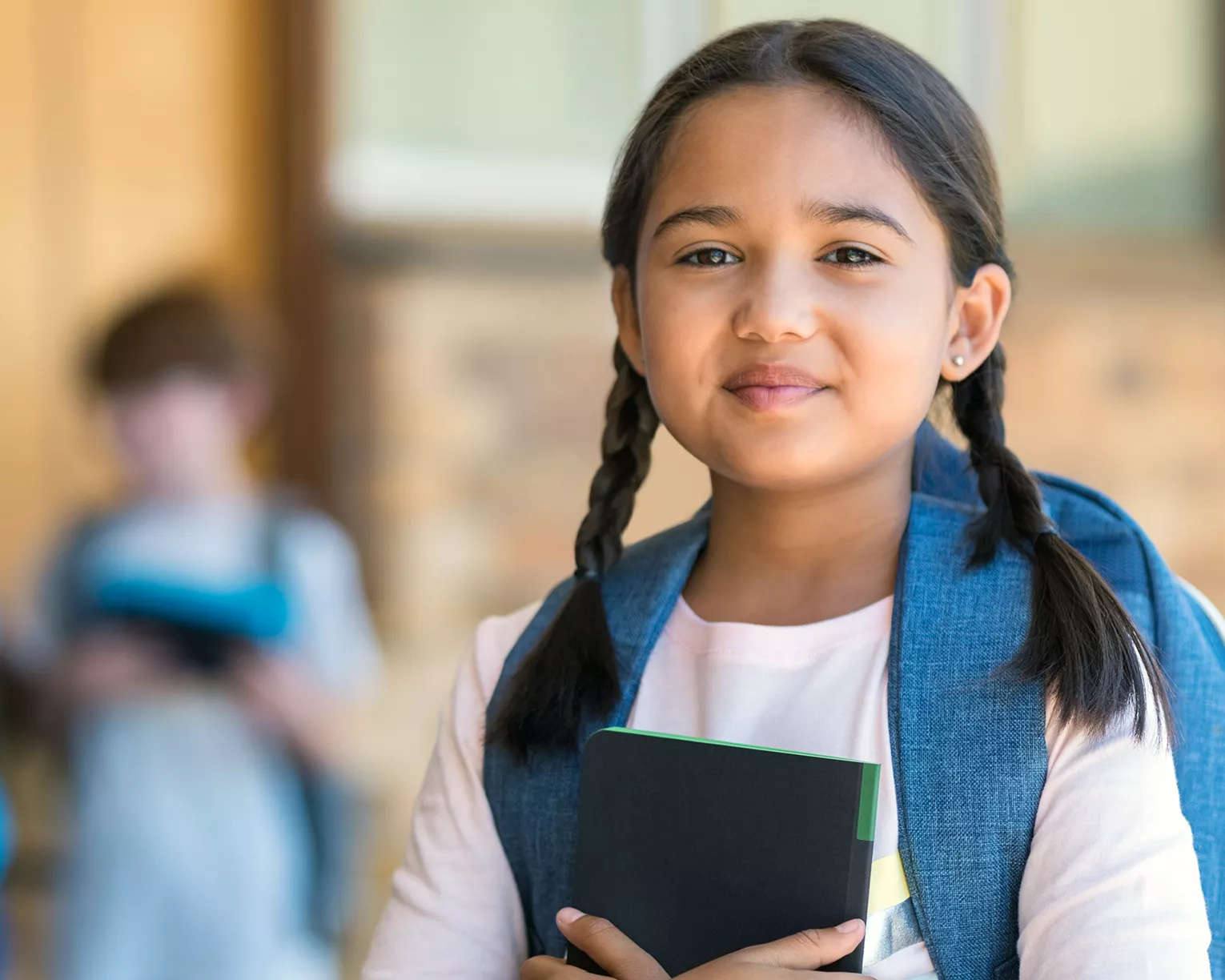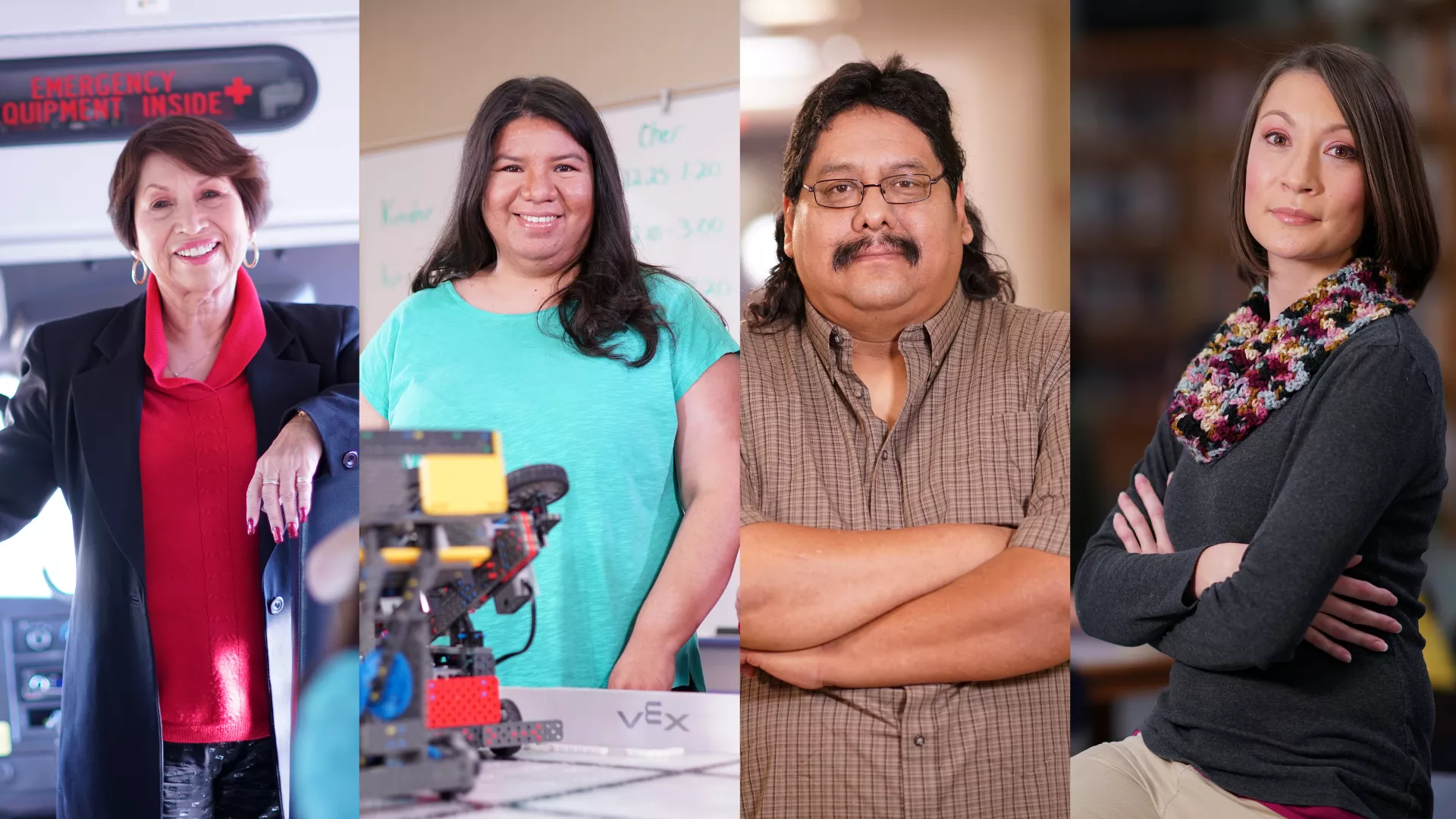-
During November, we celebrate the history, culture, and contributions of Native Peoples. To help educators with their curriculum plans, we've compiled Thanksgiving lessons and resources on learning about the tribes indigenous to North America.
Educators should be mindful of cultural appropriation when teaching about other cultures and understand that Native American students in class may experience lessons differently than non-Native students.
Lesson Plans
-
Student-Centered Digital Learning Activities
Check out these digital education tools, lesson plans, and resources available for free and downloadable from the National Indian Education Association.Interdisciplinary Stories, Webinars, Films, and Lesson Plans
The Global Oneness Project offers a library of multimedia stories comprising award-winning films, photo essays, and essays, many with companion curriculum and discussion guides.Native Americans Today
Students in grades 3-5 compare prior knowledge of Native Americans with information gathered while reading about contemporary Native Americans.Alaska Native Stories: Using Narrative to Introduce Expository Text
Students in grades 3-5 use traditional stories of Native peoples to begin a study of animals in Alaska.Amplify the Voices of Contemporary Native Peoples in Your Classroom
The Lesson Plans section of Illuminative's site contains several digital education tools, activities, and resources about Native American art, culture, history, and contemporary life. Students will learn about contemporary Indigenous changemakers fighting against invisibility and their many important contributions to this country.Thanksgiving Lesson Plans from a Native American Perspective
A Story of Survival: The Wampanoag and the English
A Thanksgiving Lesson Plan Booklet from a Native American Perspective (Oklahoma City Public Schools)Harvest Ceremony: Beyond the Thanksgiving Myth, A Study Guide (National Museum of the American Indian)
American Indian Perspectives on Thanksgiving, Grades 4-8 (NMAI)
Additional Lesson Plan Units
Native American Dolls (PDF, 1.7 MB, 28 pgs.)
Students in grades K-12 explore the perspectives and experiences of Native doll makers from five tribal groups and discover how their work is keeping old traditions and developing new ones.Pourquoi Stories: Creating Tales to Tell Why
Students in grades 3-5 study three tales and learn about their cultures of origin, then work cooperatively to write and present an original pourquoi tale.Prehistoric Native American Lesson Plan: Pottery-making Methods (
 PDF, 295 KB, 5 pgs.)
PDF, 295 KB, 5 pgs.)
Students in grades 3-12 experiment with three methods ancient people used to make pottery before the invention of the pottery wheel.Picaria: a Zuni Math Game (PDF, 2 pgs)
Students in grades 6-8 will learn how to play Picaria, a Zuni Pueblo math game similar to modern tic-tac-toe at first, but involving more movement and strategy. Create your own game board and practice mathematical thinking skills while having fun.The Cultural Significance of Naming (PDF, 2 pgs)
Explore the Native American tradition of naming a person and the cultural meaning behind sacred names. This activity features an example from a historic Lakota Sioux chief, a Navajo elder, and a well-known Mexican American writer. (grades 6-8)Background Resources
Native American Heritage Month
Resources provided by the Library of Congress, National Archives and Records Administration, National Endowment for the Humanities, National Gallery of Art, National Park Service, Smithsonian Institution and United States Holocaust Memorial Museum. Features audio and video files.A History of Native Voting Rights
Provides a brief history of the difficulties Native Americans have faced in voting since the passage of the 14th Amendment.The National Museum of the American Indian Native Knowledge 360 Educational Resources
Choose from featured resources in history, civics, geography, and STEM, or search for resources by language, nation, subject, grade, and topic.1491
Charles C. Mann, author of 1491: New Revelations of the Americas Before Columbus and 1493: Uncovering the New World Columbus Created, presents current evidence about population and agricultural advancement in the Western Hemisphere prior to European arrival.American Indian and Alaska Native Heritage Month: November 2023
Statistical data.Native Now: The Dos and Don’ts of Talking Respectfully about and with Native People from IllumiNative (PDF)
NEA's Land Acknowledgement Guide (PDF)
Land Acknowledgements are a reminder that every major city, town, and municipality benefits from the dispossession of Indigenous land and people. It is a formal recognition of that painful reality and history and a small first step in truth, healing, and reconciliation. This guide outlines why land acknowledgements are important, how to approach them, and includes further actions to support Indigenous communities.Printables & Posters
Art for Action: You Are on Native Land poster
American Indian History Timeline Events, policies, legislation and laws related to Indian land tenure from 1598 to the present.
Poster gallery from the U.S. Air Force
Video
Meet Jim Thorpe, a Real-Life Native American Superhero (grades 9-12)
Jim Thorpe, a.k.a. Wa-Tho-Huk (meaning Bright Path) was an Olympic-winning athlete, actor, and humanitarian. Learn more about his life and find opportunities to support Native American people.
Recommended Books from NEA’s Read Across America program
Share stories of Indigenous Peoples and cultures in your classroom with these titles, with related discussion questions, activities, and resources.
ELEMENTARY AND PICTURE BOOKS
- All Around Us by Xelena González
- Fry Bread: A Native American Family Story by Kevin Noble Maillard
- We Are Water Protectors by Carole Lindstrom
- We Are Grateful: Otsaliheliga by Traci Sorrell
- Chester Nez and the Unbreakable Code: A Navajo Code Talker’s Story by Joseph Bruchac
- Powwow Day by Traci Sorrell
Contenders: Two Native Baseball Players, One World Series by Traci Sorell; illustrated by Arigon Starr - Loaf the Cat Goes To The Powwow by Nicholas DeShaw
MIDDLE SCHOOL
- Ancestors Approved: Intertribal Stories for Kids by Cynthia Leitich Smith
- I Can Make This Promise by Christine Day
- Healer of the Water Monster by Brian Young
- Notable Native People: 50 INDIGENOUS LEADERS, DREAMERS, AND CHANGEMAKERS FROM PAST AND PRESENT by Dr. Adrienne Keene
- The Rez Detectives by Steven Paul Judd
- Indigenous Ingenuity: A Celebration of Traditional North American Knowledge by Deidre Havrelock & Edward Kay
- Red Bird Danced by Dawn Quigley
YOUNG ADULT
- An Indigenous Peoples’ History of the United States for Young People by Roxanne Dunbar Ortiz
- Elatsoe by Darcie Little Badger
- Hearts Unbroken by Cynthia Leitich Smith
- #NotYourPrincess: Voices of Native American Women by Lisa Charleyboy and Mary Beth Leatherdale (editors)
- Living Nations, Living Words: An Anthology of First Peoples Poetry by Joy Harjo
- Man Made Monsters by Andrea L. Rogers; illustrated by Jeff Edwards
- Looking for Smoke by K. A. Cobell
Are you an affiliate?


